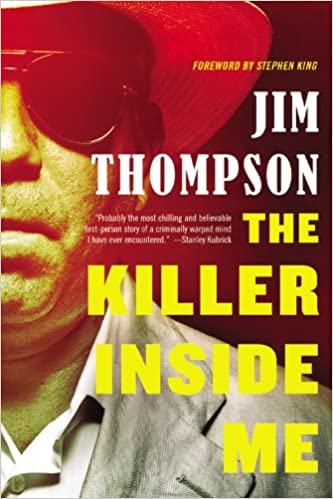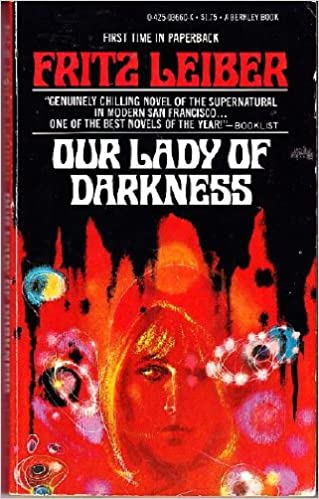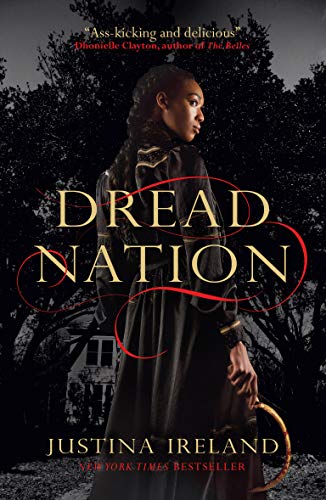I’m back, y’all! After a short break to give the gift guide some breathing room, it’s time for another round of write-ups for books that seem to be well-regarded in the realm of horror. In this intro, one thing I did want to mention that may have crossed some minds in all this. The title is called Ben Reads the HORROR CLASSICS and yet there are a decent amount of quite new novels from the last ten years. What’s up with that, yo? So I could’ve limited it to just the two Stephen Jones/Kim Newman lists and tackled mostly older, more revered horror novels, but I think horror more than many genres is capable of acting as a twisted reflection of the times and bringing to light fears and concerns of the modern audience in creative and interesting ways. As such, I wanted to bring in the NPR and Reedsy lists to infuse some more contemporary novels that either already are or may go on to become modern classics of the genre. Hey man, come on. The more the merrier!
With this slab of stolid stories, we have a modern vampire tale featuring the dregs of society, a dark noir starring a secret sociopath, a much lauded landmark horror anthology from the ’80s, a literate tale of urban horror and an alternate history zombie condemnation of racism.
Also for those just joining me, this is my journey through the following “Best of” Horror lists:
Reedsy Discovery Best Horror Books
Stephen Jones & Kim Newman’s Horror: 100 Best Books
Stephen Jones & Kim Newman Horror: Another 100 Books
If you want to check out my previous entries, they can be found here:
Part 10 | Part 9 | Part 8 | Part 7 | Part 6 |Part 5 | Part 4 | Part 3 | Part 2 | Part 1
Shut up, Ben. Let’s get moving.

The Lesser Dead (Christopher Buehlman, 2014)
List: Reedsy Discovery
For this one, I checked out the audiobook narrated by the author himself. Normally author-read audiobooks are a mixed bag. I mean, these guys are writers, not actors. But damn, Buehlman impressed me across the board. Not only is his writing rich, well-paced, dark and witty but he seems to have a knack for different voices and accents making the audiobook version of this an absolute treat to listen to. The book itself tells the story of an enclave of vampires living in the abandoned tunnels of the New York subway system in the 1970s, narrated by a younger vampire who was turned in the 1930s. The comparison to The Great Gatsby on the book jacket is an appropriate one here as the first half of the book puts quite a lot of emphasis building these characters, giving us snapshots into their lives but hinting at some darker internal sorrow and looming dread. Their whole society is upended when they come across a group of vampiric children who seem to be unable to control their impulses which leads to a series of events that threatens to destroy their fragile subterranean society.
This book really worked for me. The narrator Joey Peacock was a really fun character to live in the headspace of, and Buehlman does a great job populating his world with an odd and interesting assortment of characters, both vampiric and not. At first there were some plot holes and logic that bugged me but Buehlman very cleverly had a way of tying it all together in the end. Some may feel cheated in a way but I think that’ll differ from person to person. This is one of the better books I’ve consumed in this Best Horror run. Highly recommended.

The Killer Inside Me (Jim Thompson, 1952)
List: Jones/Newman
The way people see Deputy Sheriff Lou Ford as a corny, cheerful and likable enough dope dating a sweet schoolteacher, well, they ain’t seein’ the real Lou Ford. Lou has the sickness. It’s been quiet for a long time but when he gets mixed up with a whore on the edge of town, he commits a vicious double murder that awakens his inner killer. And he just has to keep killing to cover it all up.
This was a pretty damn good hard-boiled crime story mixed with a compelling character study of a psychopath. It’s easy to look at this as a kind of precursor to American Psycho with how it contrasts Lou’s innocent-seeming outer veneer with his inner monster. It’s an easy read too. I read most of it in one day. Thompson’s prose is clean and economical and does a great job of really getting into Lou’s headspace, showing that he isn’t quite the happy-go-lucky dullard that everyone thinks he is. He also makes some interesting decisions to intentionally obfuscate certain plot elements which helps create a more impactful third act. Plus Lou himself is genuinely a character you don’t mind spending time with. He seems as much a victim of his own impulses as the people he kills.
As an interesting little thought experiment, I also watched the two film adaptations after finishing the book to see how well they captured Lou Ford. The first one was the 1976 version directed by erstwhile western director Burt Kennedy and starring a young Stacy Keach as Ford. Keach does a solid enough job in the role but the film feels overly rushed, especially in its final third where it comes up with a more traditional New Hollywood ending. The second version was the 2010 film directed by arthouse provocateur director Michael Winterbottom and starring Casey Affleck as Ford. Interesting casting decision in retrospect given the controversy around Affleck’s treatment of women coming out in recent years. Affleck definitely has that innocent boyish look that helps sell the small town charm that Lou exudes naturally. The film also adds some voiceover narration occasionally in the film to help set the tone of Lou’s duality. In general, this version is much more faithful to the original novel and is the better of the two. The problem is that so much of the book is so internal it still doesn’t quite capture Lou fully.
The final verdict on this one? The Killer Inside Me is damn fine, yes sir.

Dark Forces (Edited by Kirby Macauley, 1980)
List: Jones/Newman
Here we have one of the big seminal anthologies of ’80s horror with heavy hitter mainstays like Stephen King, Ramsey Campbell, Charles L. Grant, Robert Bloch, Theodore Sturgeon and Robert Aickman as well as others. Even more interesting is the inclusion of some literary titans like Isaac Bashevis Singer and Joyce Carol Oates as well as writers who, while they’ve dipped into the horror well on occasion, are more known for their fantasy and/or sci-fi work like Ray Bradbury, Joe Halderman, Clifford D. Simak and Gene Wolfe. There are even stories from cartoonists like Edward Gorey and Gahan Wilson. As one would expect from such a diverse collection of authors, the stories are incredibly varied in tone but still with a pretty consistent quality of decent-to-great.
Much ink has been spent on King’s well-known novella “The Mist”, making it’s first appearance here. Suffice it to say, it’s one of King’s better shorter works and a fun rollercoaster of a story. Acting as the other big anchor, “Children of the Kingdom” by notoriously non-prolific author of The Ceremonies (which I will be getting too sooner or later in this whole thing) T.E.D. Klein is a very well-done, bizarre story of slipping creeping things in the dark in the city during a massive blackout. Other ones that stand out include Ramsey Campbell’s creepy and strange “The Brood”, Karl Edward Wagner’s slightly-too-long but still quite good kudzu monster story “When the Summer Ends”, Lisa Tuttle’s odd, eerie folk horror of “When the Stones Grow” and the unsettling “Garden of Blackred Roses” from Charles L. Grant. Honestly two of the weakest stories are from the two of the biggest names. Isaac Bashevis Singer’s “The Enemy” just felt somewhat slight and completely devoid of suspense. Also “The Bingo Master” from Joyce Carol Oates falls in the same bucket. It’s really not even remotely horror. Having said that, it is a quite well-done character piece like much of Oates’ work. It just doesn’t fit in with much of this collection. Overall, if you’re looking for a consistently solid collection of stories from masters of ’80s horror, this should whet your whistle for a while.

Our Lady of Darkness (Fritz Leiber, 1977)
List: Jones/Newman
It begins when Franz Western, a noted author and scholar of classic supernatural horror fiction, espies from his window a strange dancing figure dancing in the distance. When he goes to investigate, he looks back at his apartment and discovers the odd brown figure waving back at him from inside. This strange event coupled with his recent acquisition in a drunken stupor of two old and rare books, one on the topic of Megapolisomancy and another mysterious journal believed to be written by noted weird fiction writer Ashton Clark Smith, leads him down a bizarre path into black magic and paramentals who embody the evil of the city itself.
This is a hard book to get a proper hold on. It is chock full of minutiae both in highly detailed descriptions of the city of San Francisco and in the near constant barrage of references to classic horror and genre fiction writers woven into the narrative. While he references the likes of Jack London, Ambrose Bierce, H.P. Lovecraft, Dashiell Hammett and others, M.R. James may loom largest in spirit with significant aspects of the story being allusions to some of James’ works (and there are probably more than I’m aware since I’ve only read a few James stories) including the climax which seems to be a direct reference to “Whistle and I’ll Come to You, My Lad”. At times all these various references are kinda neat in the same way Gemma Files’ Experimental Film referenced the Canadian film industry. The problem is that it really drags down the narrative and saps the tension from the tale. Having said that, the previous referenced climax was actually pretty good but it felt almost like too little, too late. Leiber is an interesting writer but this one just seemed to lack focus.

Dread Nation (Justina Ireland, 2018)
List: Reedsy Discovery
Some believe the dead arose out of animosity over the splintering of America during the Civil War. Whatever the reason, the battle between the states has taken a backseat to the surviving humans’ fight against the undead. Slaves have been freed but young black people are required to enroll in special combat schools to fight the undead and protect the largely rich, white society ensconced within city walls. One particular young black lady Jane attends the prestigious Miss Preston’s combat academy and is strong-willed and very talented with her dual-wielded sickles. As she gets mixed up in a secret government conspiracy to establish a “modern utopia out in the wild west run by “survivalists”, those longing for the good ol’ days of slavery, she finds herself and her fellow prissy schoolmate and frenemy Kate in a world of trouble they may not survive.
I quite liked this frisky and engaging alternate history zombie story where like many modern zombie narratives, the humans in this world are as much a threat if not more so than the undead. Jane is a very good heroine who is smart and easy to like in equal measure. Even some of the side characters are interesting like her friend Kate and the town tinkerer Gideon. Ireland also does a good job of building up this world gone wrong and peppering it with small details that make it more fully realized. Having said that, some of the good characters I feel get a little short shrift like her teacher Ms. Duncan and Mr. Redfern in favor of making the villains truly villainous. I mean, the bad guys here are almost caricatures of people they’re so evil. Of course, there truly were (and still are) vile and malicious racists so even this isn’t a major complaint. Honestly the thing that bugged me the most was that it’s obvious Ireland is seeding the narrative for sequels (and after I finished it I noticed there is indeed already another book released in the series, Deathless Divide) which is where I expect some of the under-characterization is coming from. Overall though, this is a well-paced and well-written book that’s worth checking out, especially as a good example of horror for the YA crowd.

